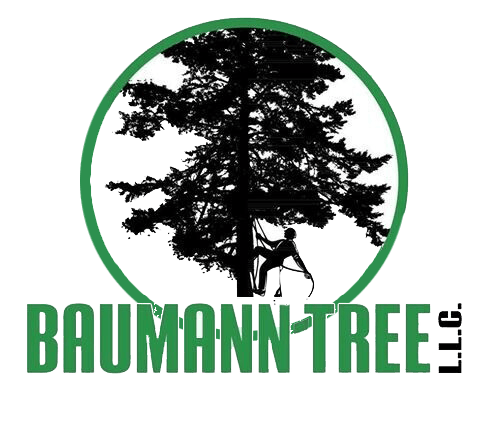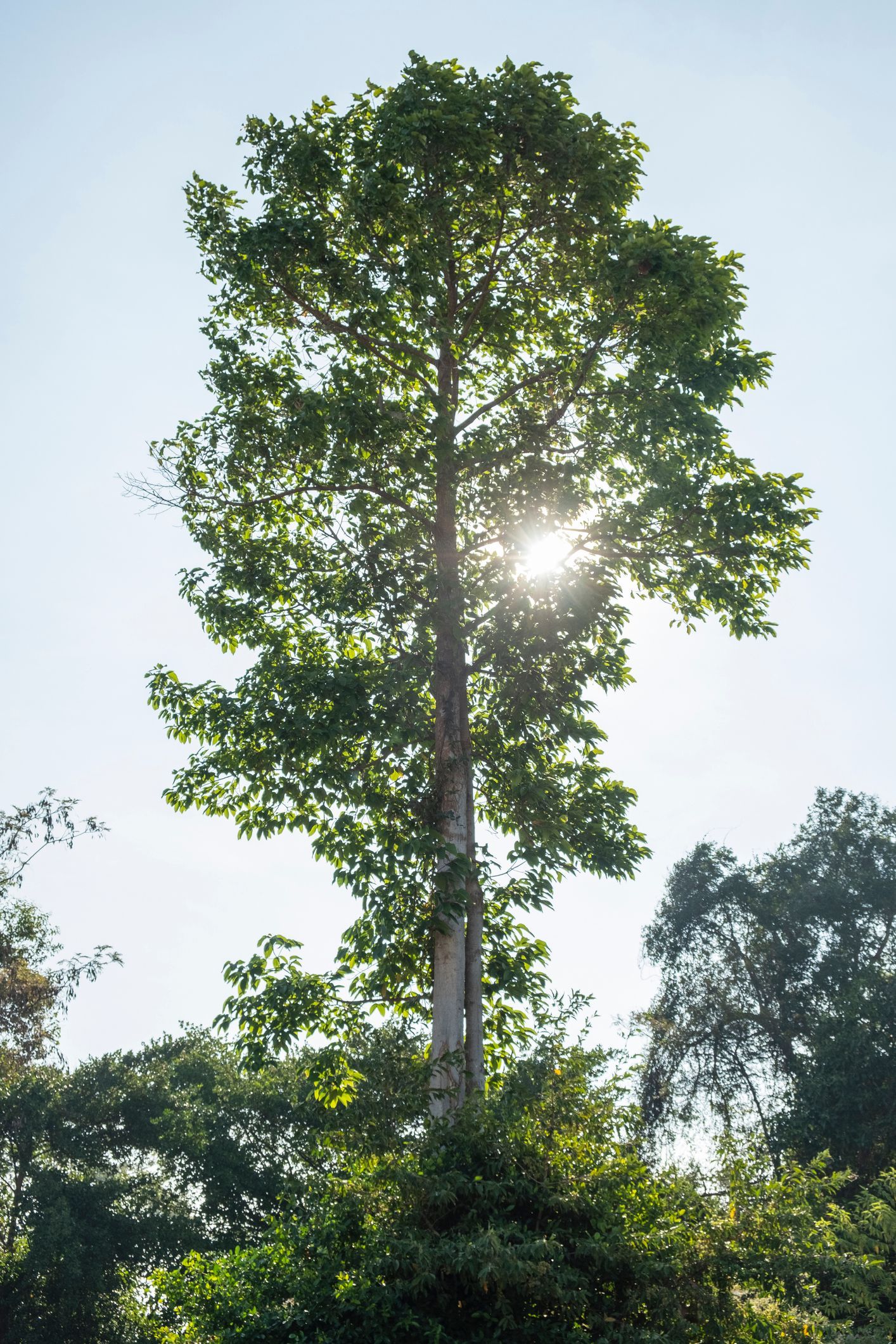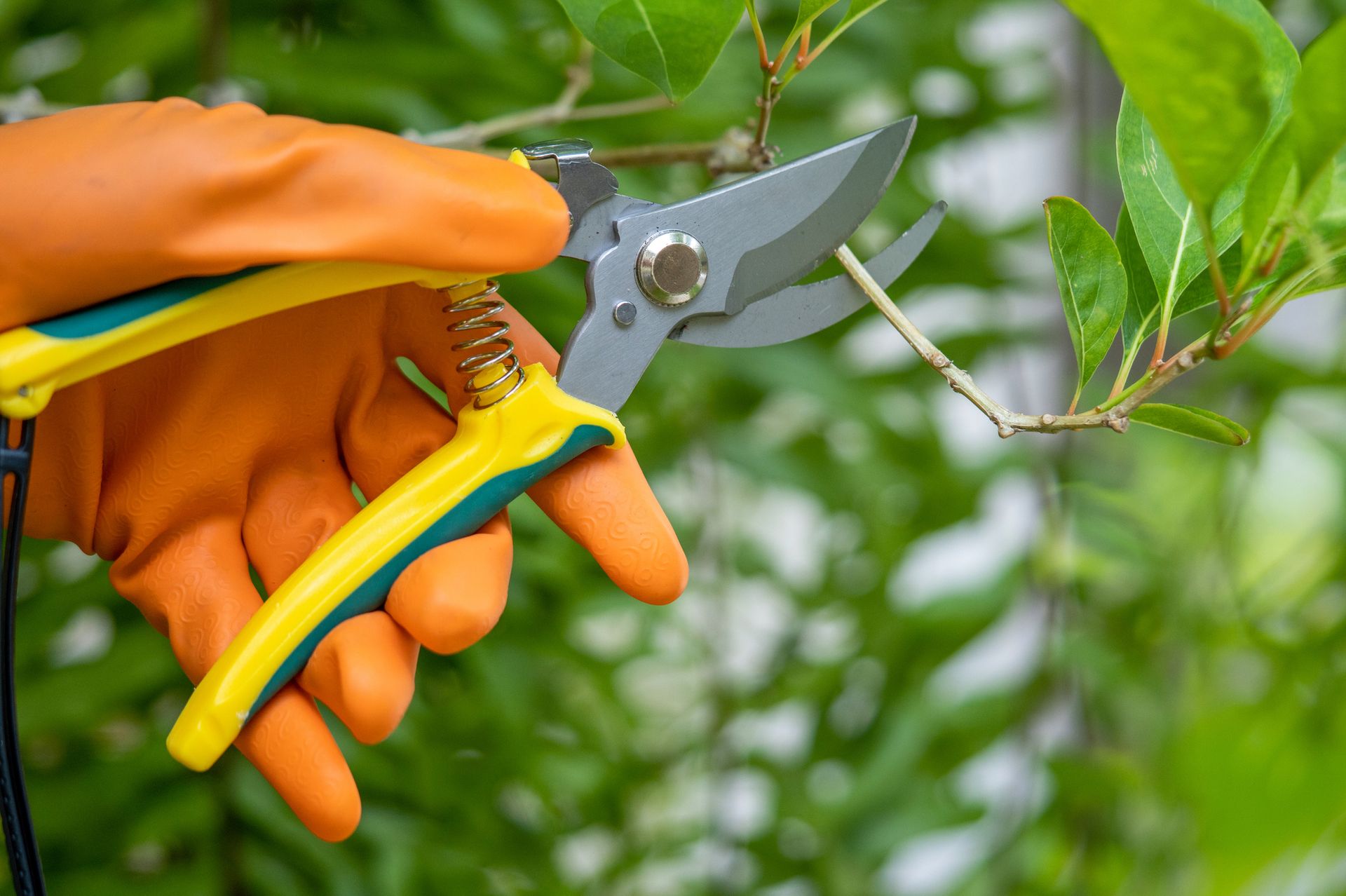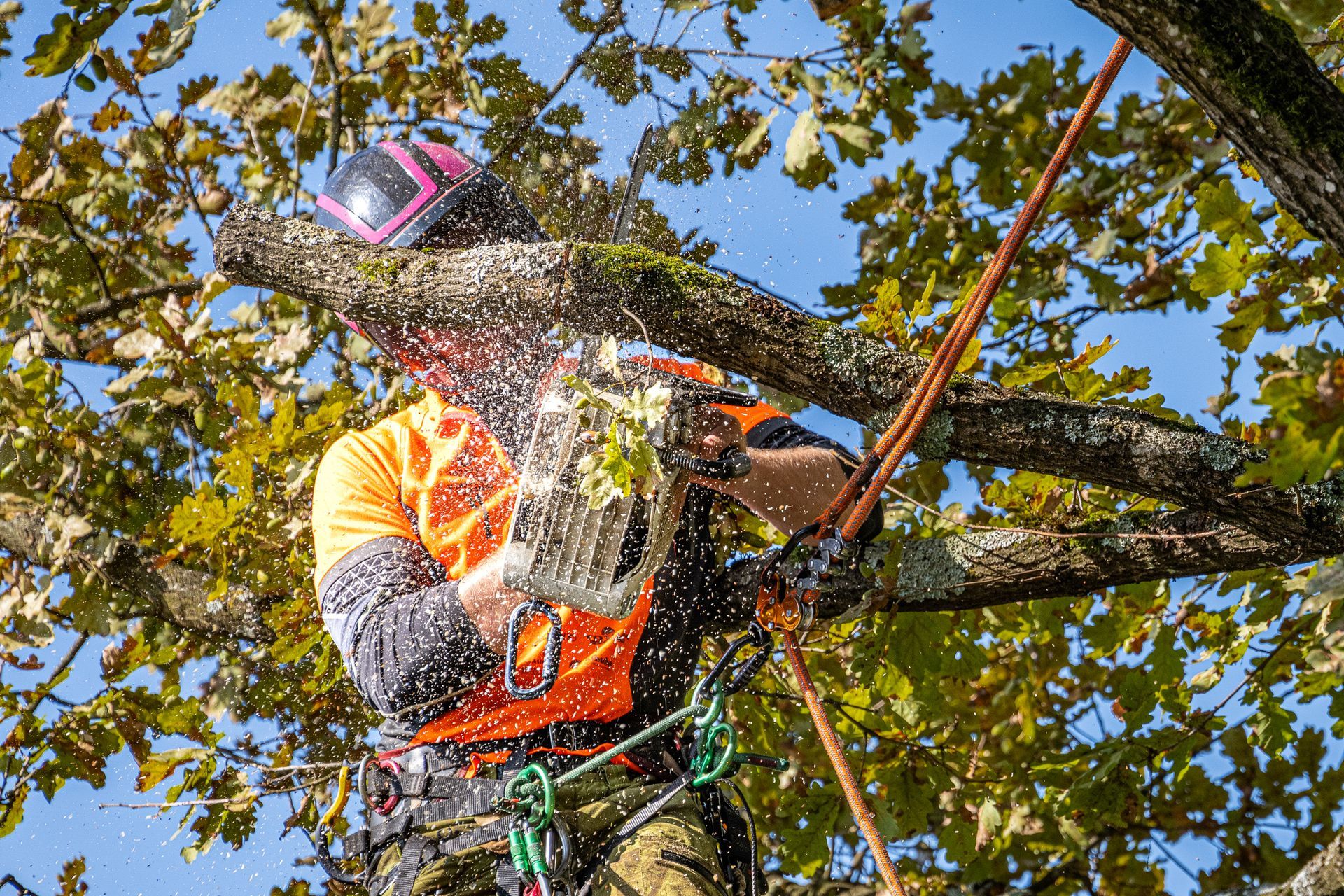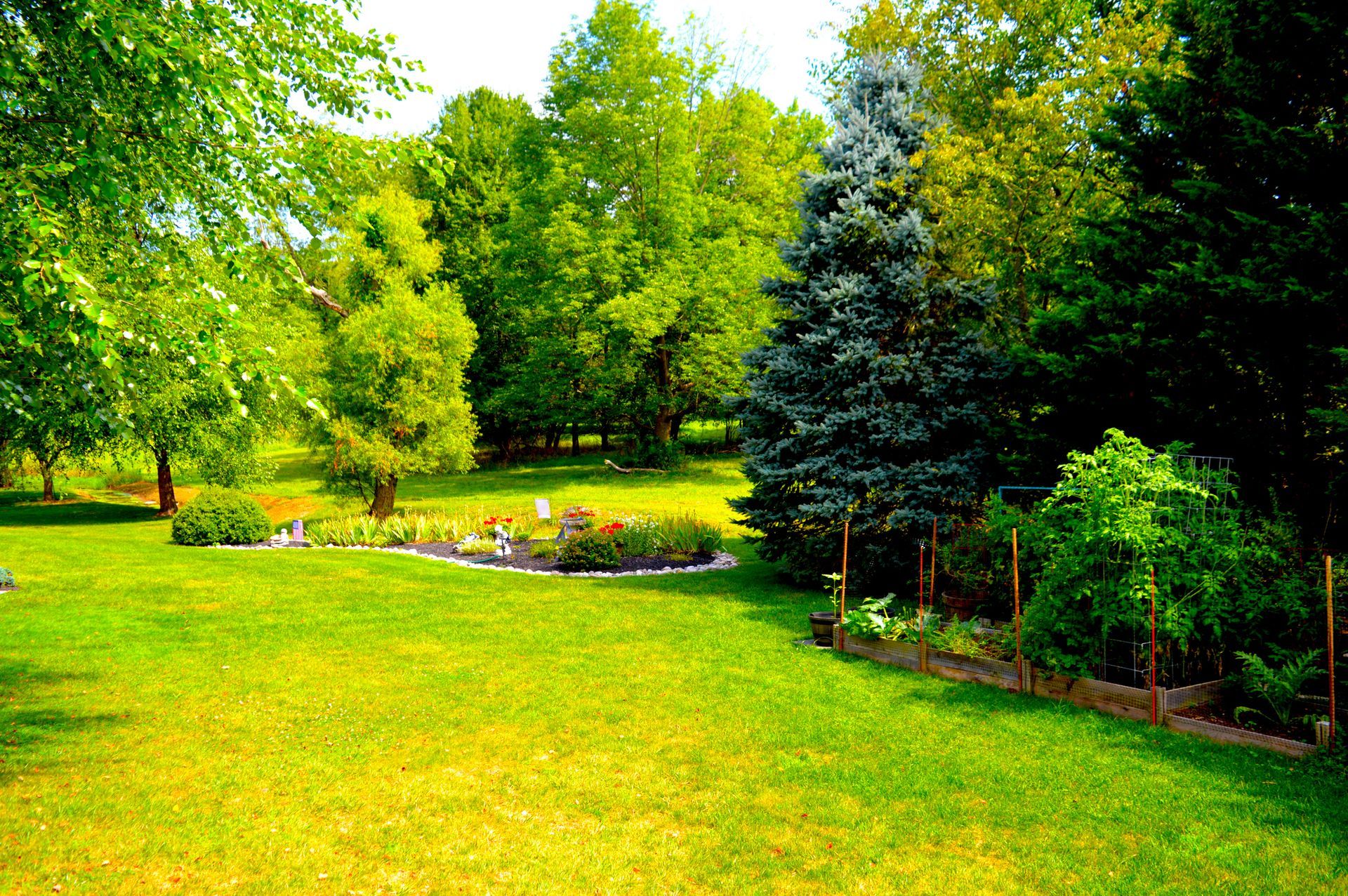Friend or Foe: What to Know About Osage Orange Trees
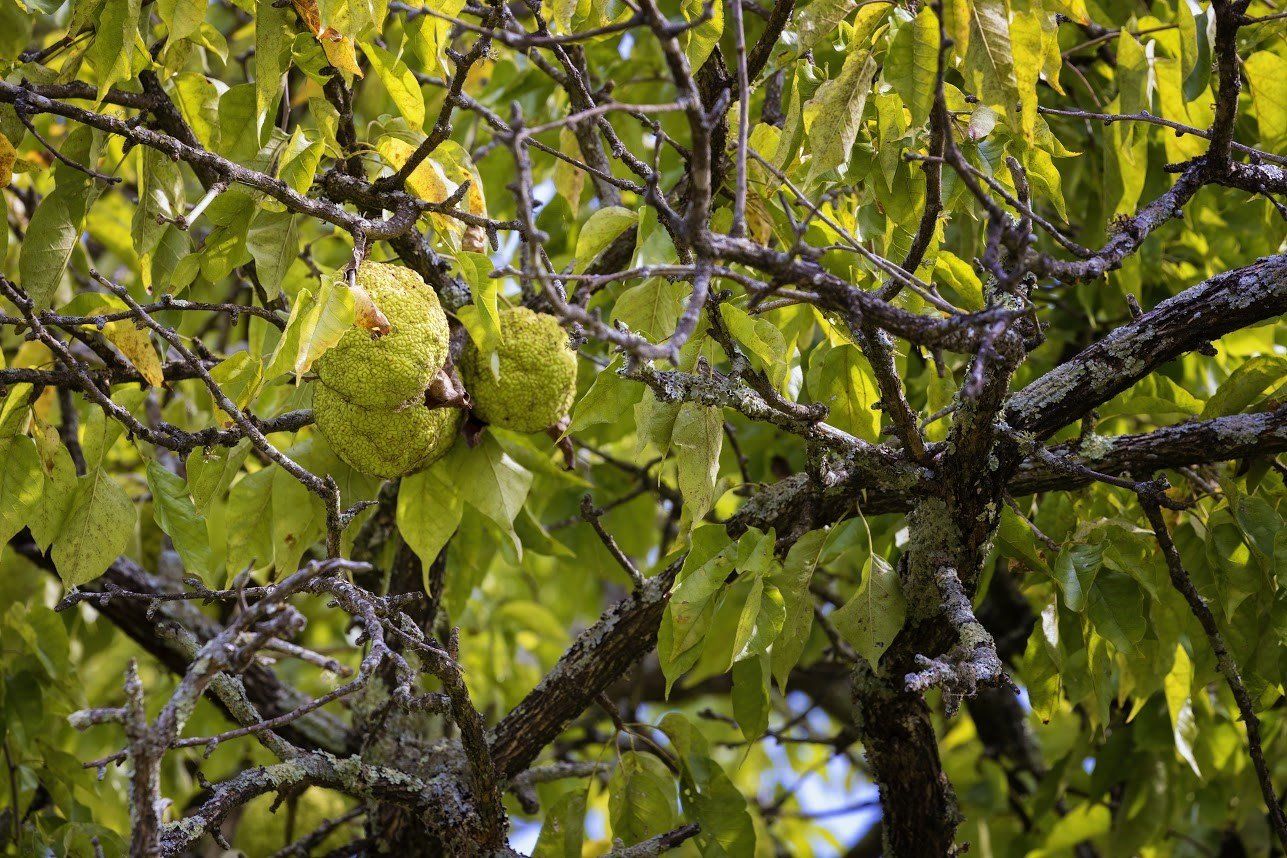
Osage orange, or Maclura pomifera, is a thorny tree found throughout the state of Missouri. Also referred to as horse apple, hedge apple, and Bois d'Arc, the Osage is easily recognized by its large, green, lumpy fruits. The controversial Osage orange has a long, valuable history with a potentially useful future for many property owners. Here's what to know about Osage orange trees.
Osage Orange Trees Have a History of Friend and Foe
The Osage orange tree is not native to Missouri. Instead, it originates from southern Oklahoma, western Arkansas, and areas of east Texas. The tree came to grow in all parts of those states, but it was first found near Osage Native American settlements.
Osage Orange Trees as Friend
The early Native Americans esteemed the tree for its excellent wood, which made superior hunting bows. The tree wood was useful for war clubs, tomahawk handles, rope, and tannin.
Early settlers and pioneers found the wood of the Osage orange tree incredibly useful as well. The strength of its wood helped create valuable wagon wheel rims and hubs. As the frontier expanded, so too did the knowledge of the famous tree wood. Soon Osage orange trees were made into railroad ties and telegraph poles.
Finally, prairie settlers in the 1800s discovered Osage orange trees made the perfect hedge tree. Osage trees could grow into dense, thorny hedges to act as a fence to help keep cattle and other animals at bay. In 1879, Monroe County had an incredible 2,000 miles of Osage orange hedge rows.
Osage Orange Trees as Foe
Barbed wire became a cheap fence replacement in 1874, and the popularity of Osage trees quickly faded. Farmers and other property owners now viewed the tree as a liability rather than an asset. Osage orange trees needed trimming to help retain their hedge shape and to prevent uncontrolled spread. The trees also stole valuable water from crop land.
Lastly, the evolution of farming into a larger scale required the removal of the restrictive rows of Osage orange tree hedges.
Osage Orange Trees Can Still Serve a Purpose
Osage orange trees continue to grow in the wild and can be found in the few occasional remains of hedge rows. While some view the tree as an intruder to vast, open prairie lands, others feel their growth should be encouraged. Recent movements aim to plant more Osage orange trees.
Property owners may still find the trees to be useful. Many homeowners prefer to grow Osage orange trees in rows rather than shrubs to create a hedge. Their trunks are short and tend to branch off into multiple limbs. The right amount of trimming
encourages the trees to grow in a thick, bushy manner — the ideal hedge. Additionally, the thorns of the Osage tree may halt unwanted intruders.
Osage orange trees can grow in a variety of soil types but need full sun. The tree is a good choice for a hedge tree because of its relatively quick growth — up to two feet each year. If your property is larger, Osage oranges also make an effective wind barrier to help block frigid winter winds.
Osage orange trees can be prickly to work with, and the fruit produces a white sap. You may want to have a professional deal with pruning and trimming if you don't want to tangle with this infamous tree. An expert will be better equipped to shape the trees to the desired hedge formation.
Baumann Tree is your source for tree experts if you ever need to care for or remove Osage orange trees from your property. Call us, and we can answer your questions about the Osage orange and other trees that grow on your property.
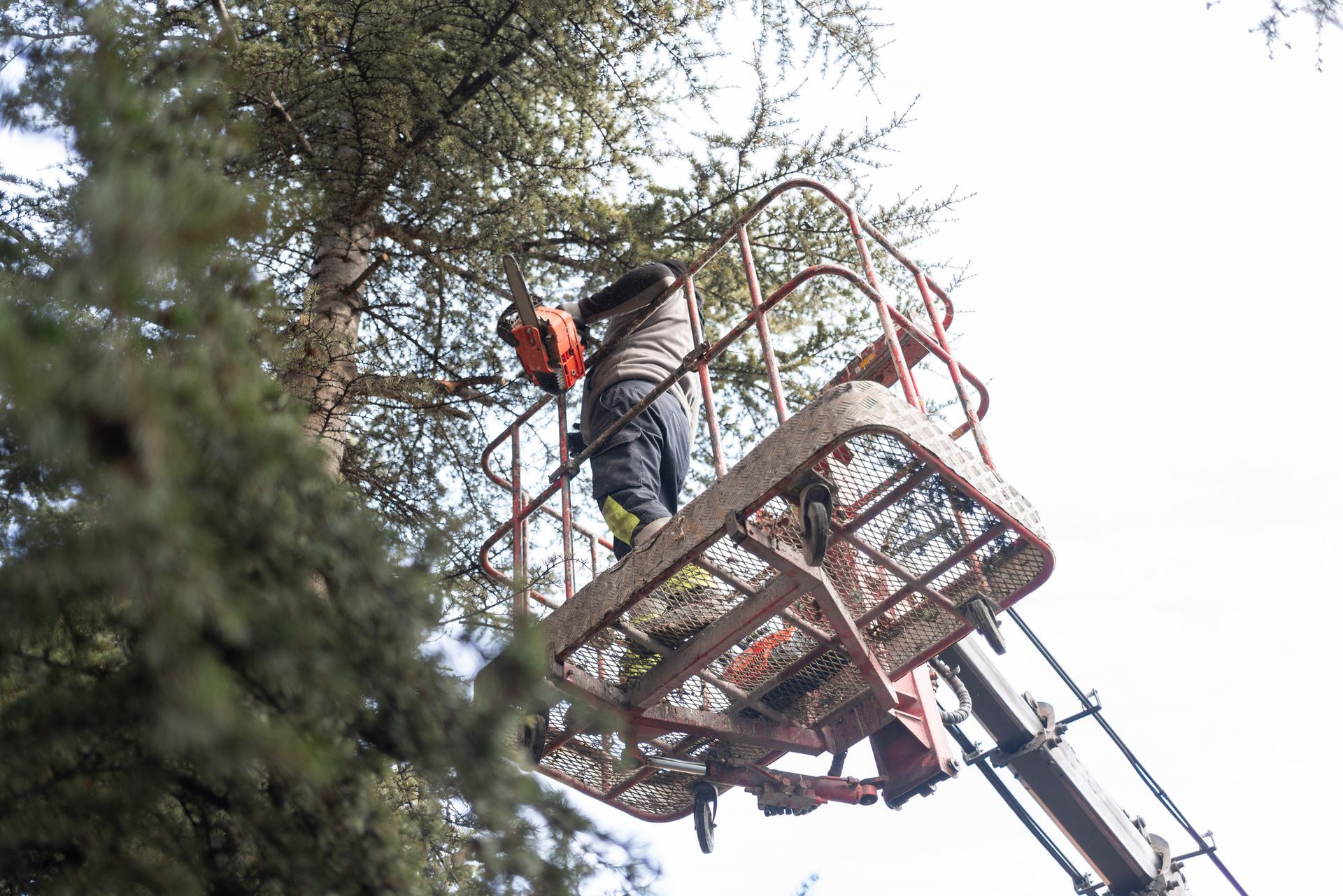
Taking care of your trees is essential for the safety, beauty, and health of your property. In Chesterfield, MO , Baumann Tree provides professional tree services, tree trimming, tree care, and tree removal to help homeowners maintain strong, healthy, and safe landscapes. Call us today at 636-375-2812 to schedule a consultation or service. 1. Professional Tree Trimming in Chesterfield, MO Regular tree trimming keeps your trees healthy and prevents damage from overgrown or dead branches. Proper tree trimming in Chesterfield, MO removes weak or hazardous limbs, improves the tree’s structure, and encourages healthy growth for the coming seasons. Our trained arborists ensure trimming is done safely and efficiently. 2. Safe Tree Removal When Needed Sometimes a tree becomes a hazard due to disease, damage, or age. Tree removal in Chesterfield, MO should always be handled by professionals to ensure safety for your home, vehicles, and landscape. Baumann Tree has the expertise and equipment to remove trees of any size safely and efficiently. 3. Complete Tree Care Services Beyond trimming and removal, ongoing tree care in Chesterfield, MO is key to maintaining strong, healthy trees. We offer services that address disease prevention, pest management, structural support, and overall tree health. Regular care prolongs the life of your trees and enhances the beauty of your property. 4. Full-Service Tree Solutions Baumann Tree provides comprehensive tree services in Chesterfield, MO . From emergency storm response to routine maintenance, we handle all aspects of tree care with professionalism and safety in mind. Our team can assess your property, recommend solutions, and execute services efficiently to keep your trees thriving. Call Baumann Tree for Expert Tree Services in Chesterfield, MO Whether you need tree trimming, tree removal, tree care, or full tree services in Chesterfield, MO , Baumann Tree is here to help. Contact us today at 636-375-2812 for professional, reliable, and safe tree services.

As the leaves begin to change and temperatures cool in St Louis, MO , it’s the perfect time to give your trees some attention. Proper fall care helps protect your property, prevent damage, and set your landscape up for a healthy spring. At Baumann Tree , we specialize in tree services, tree trimming, tree removal, and tree care in St Louis, MO , and we’re here to help homeowners prepare their trees for the season. Call us today at 636-375-2812 to schedule a consultation.
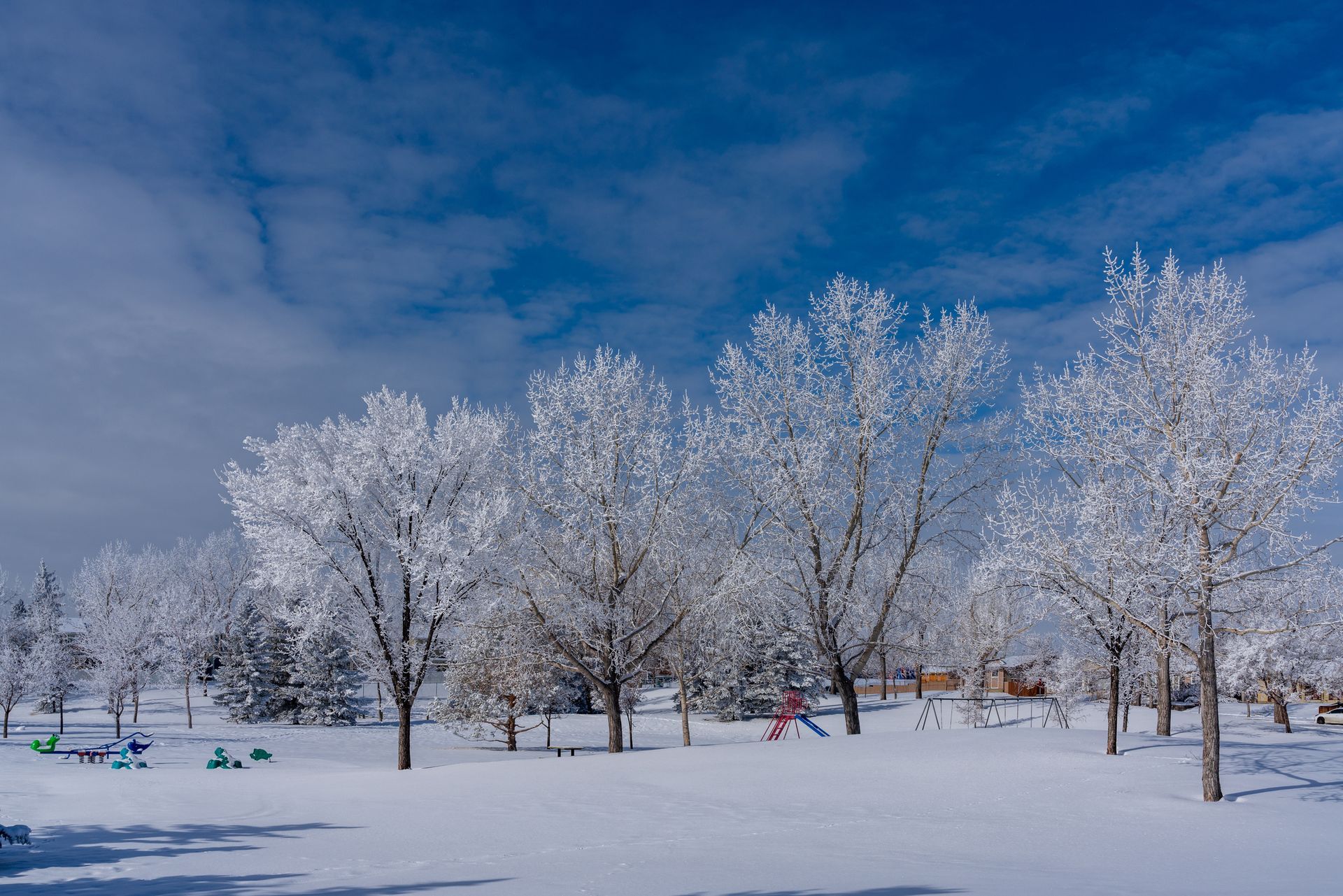
Winter in St Louis, MO can be tough on trees. Freezing temperatures, ice, and snow add stress that can lead to broken branches, structural damage, and safety hazards. At Baumann Tree , we provide professional tree services, tree trimming, tree removal, and tree care in St Louis, MO, h elping homeowners protect their property and prepare their trees for the season. Call us today at 636-375-2812 to schedule a winter tree evaluation. 1. Winter Tree Trimming for Safety and Health Winter is one of the best times for pruning because trees are dormant. Tree trimming in St Louis, MO removes weak, dead, or overextended limbs that are most likely to break under snow or ice. Proper trimming reduces hazards, keeps your landscape looking neat, and promotes healthy growth when spring returns. 2. Remove Dangerous Trees Before Winter Storms If a tree is leaning, decaying, or showing signs of structural weakness, winter weather can make it a safety risk. Professional tree removal in St Louis, MO ensures unstable trees are removed safely, protecting your home, vehicles, and nearby structures from damage. 3. Protect Young and Newly Planted Trees Young trees are particularly vulnerable during the winter months. Adding mulch around the base insulates roots and helps regulate soil temperature, while checking moisture levels before freezing prevents drying and damage. Proper care ensures your young trees survive the winter and thrive in spring. 4. Clear Dead Branches and Debris Removing dead branches and yard debris before winter reduces the risk of damage during snow and ice storms. It also keeps your property safe and makes it easier to spot potential hazards in your trees. 5. Schedule a Professional Winter Tree Inspection A professional inspection from Baumann Tree can identify hidden issues such as weak branches, internal decay, or pest damage. Addressing these problems before winter ensures your trees remain strong and your property stays protected. Call Baumann Tree for Winter Tree Care in St Louis, MO Whether you need tree services, tree trimming, tree removal, or full tree care in St Louis, MO , Baumann Tree is ready to help you prepare for winter safely. Call us at 636-375-2812 today to schedule your service.
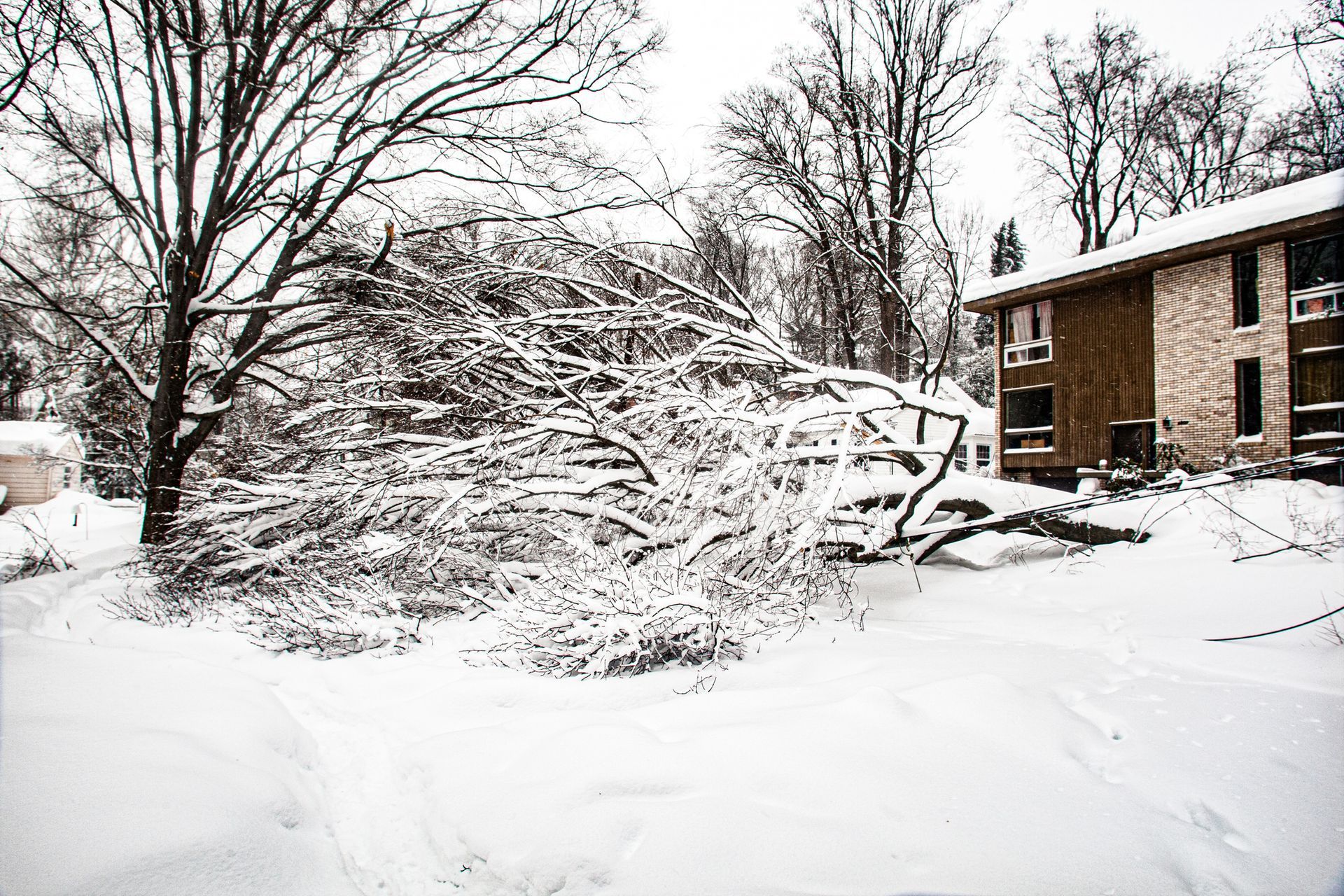
Severe storms in St Louis, MO can cause sudden and dangerous tree damage, from broken limbs to fallen trees. When a storm strikes, it’s critical to act quickly to protect your home, vehicles, and property. At Baumann Tree , we offer expert emergency tree services, tree removal, tree trimming, and full tree care in St Louis, MO . Call us immediately at 636-375-2812 if you have storm-damaged trees. 1. Fast Emergency Response Storm damage often requires immediate attention to prevent further property damage or injury. Our team is trained to respond quickly and safely, assessing the situation and removing dangerous limbs or fallen trees efficiently. Whether it’s a single branch or a large storm-damaged tree, Baumann Tree has the equipment and expertise to handle it. 2. Safe Tree Removal After Storm Damage Trees that are cracked, split, or leaning after a storm pose serious risks. Professional tree removal in St Louis, MO ensures these hazardous trees are safely removed without causing additional damage to your property. Attempting removal yourself can be dangerous — always rely on trained experts. 3. Emergency Tree Trimming to Prevent Further Damage Sometimes a tree is partially damaged but still standing. In these cases, tree trimming in St Louis, MO can remove broken or weakened limbs, stabilizing the tree and preventing further breakage. Prompt trimming also keeps your property safer until a full evaluation or removal is possible. 4. Full Tree Care After Storms After immediate hazards are addressed, it’s important to inspect the rest of your trees. Professional tree care in St Louis, MO ensures hidden damage, disease, or stress is identified early, helping your landscape recover fully from the storm. Call Baumann Tree for Emergency Storm Damage Services in St Louis, MO If a storm has damaged your trees, don’t wait. Emergency tree services, tree removal, tree trimming, and full tree care in St Louis, MO are just a call away. Contact Baumann Tree at 636-375-2812 for fast, safe, and professional service.

Taking care of your trees is about more than just maintaining curb appeal—it’s about protecting your property, keeping your family safe, and ensuring your landscape stays healthy year-round. At Baumann Tree , we’re proud to provide professional tree removal, tree trimming, and tree services in St. Louis and the surrounding areas.
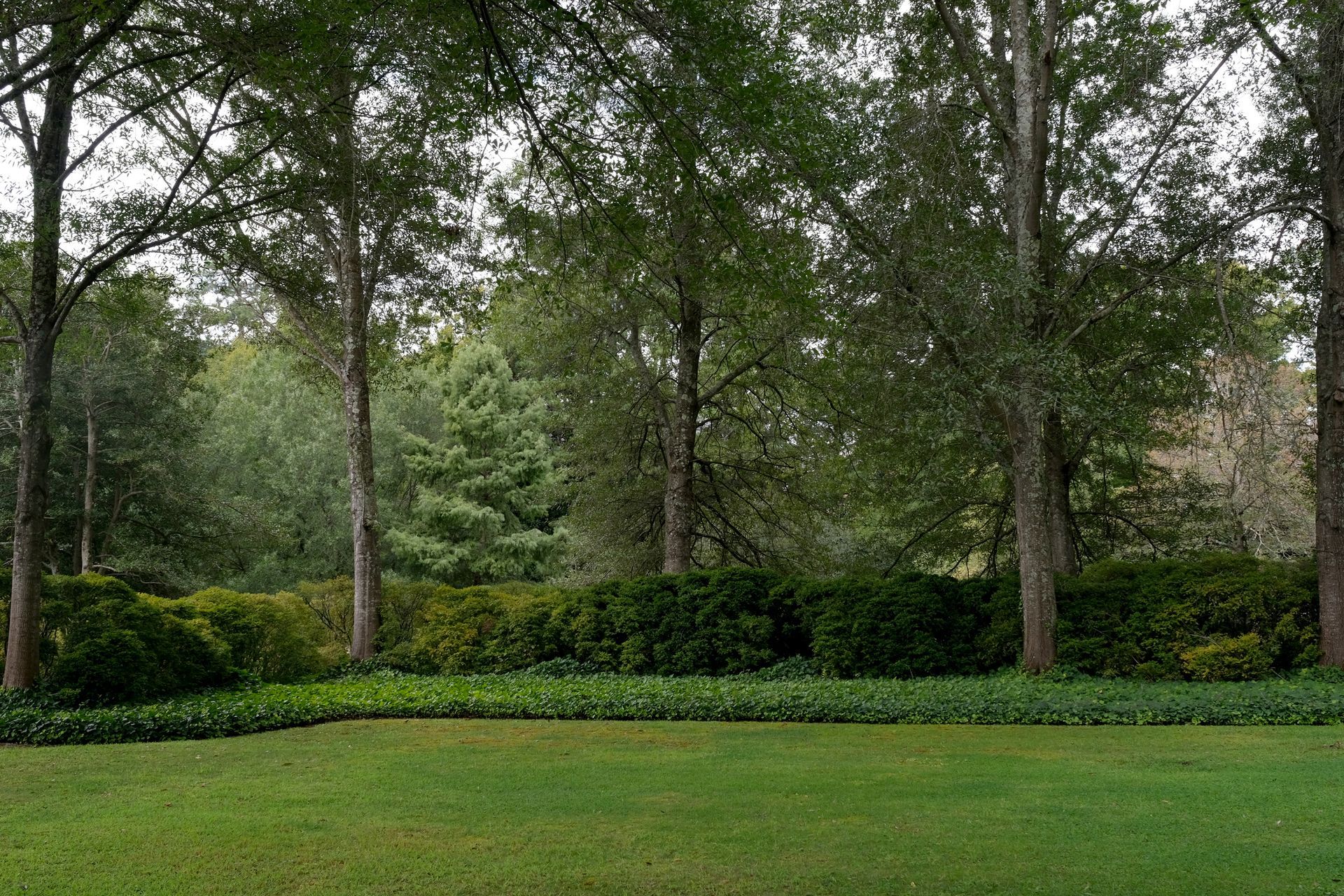
Call Baumann Tree Today: (636) 375-2812 If you’re looking for reliable, professional, and affordable tree service in St. Louis, MO , look no further than Baumann Tree . We specialize in tree removal , tree trimming , and complete tree care services for homeowners and businesses throughout the St. Louis area. With years of experience and a commitment to safety, we’re the trusted choice for tree work of all types. Whether you need hazardous tree removal in St. Louis, MO , or regular maintenance like tree trimming , our team is ready to help. Call us today at (636) 375-2812 for a free estimate. Expert Tree Removal in St. Louis, MO Dead, damaged, or dangerously leaning trees can pose a serious risk to your property and safety. Our experienced crew provides safe and efficient tree removal services in St. Louis, MO , using advanced equipment and proven techniques to handle even the most complex removals. Don’t wait for a storm to take down a weak tree. Our professionals assess risk factors and remove trees before they become a liability. If you're unsure whether a tree on your property needs to come down, call Baumann Tree for a consultation. Quality Tree Trimming in St. Louis, MO Regular tree trimming in St. Louis, MO is essential for maintaining the health, shape, and structure of your trees. Overgrown branches not only look unkempt, but they can also interfere with power lines, block sunlight, and create safety hazards. At Baumann Tree, we trim for health, safety, and appearance. We know how to properly prune a wide range of local tree species and help homeowners maintain beautiful, balanced trees that add value and curb appeal to their property. Our tree trimming services in St. Louis include: Crown thinning and shaping Deadwood removal Clearance for structures and walkways Seasonal pruning for optimal growth Full-Service Tree Care in St. Louis, MO Beyond trimming and removal, Baumann Tree offers complete tree care services in St. Louis, MO , tailored to your property’s specific needs. Our comprehensive offerings include: Tree health inspections and disease diagnosis Emergency storm cleanup and debris removal Stump grinding and root removal Brush clearing and lot preparation Tree cabling and bracing for structural support We work with both residential and commercial properties to ensure safe, healthy, and attractive landscapes year-round. Why Choose Baumann Tree? Choosing the right company for tree service in St. Louis, MO can save you time, money, and stress. Baumann Tree is a locally owned and operated business with a reputation for honesty, hard work, and top-quality service. What sets us apart: Fully insured and licensed professionals Affordable, transparent pricing Prompt and courteous service 24/7 emergency response available Locally rooted and community-focused We take pride in our workmanship and treat every property like it’s our own. Request a Free Estimate Today If you need tree trimming, tree removal , or any other tree service in St. Louis, MO , don’t wait. Call Baumann Tree today at (636) 375-2812 to speak with a member of our team and schedule your free, no-obligation estimate. Baumann Tree – Providing safe, affordable, and professional tree services in St. Louis, Missouri
